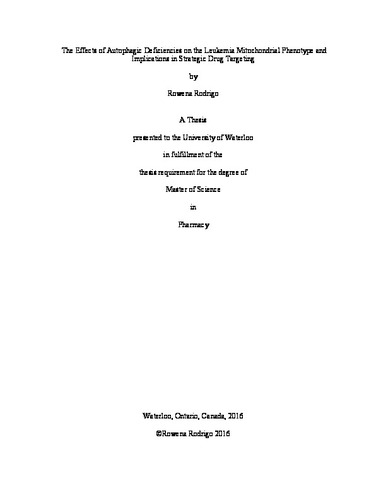| dc.description.abstract | Acute myeloid leukemia (AML) is a cancer that develops when hematopoietic stem cells in the bone marrow transform into malignant cells and subsequently grow and replicate aberrantly. Autophagy, a pathway by which cellular components are sequestered and degraded in response to a variety of signals, is modified in AML. Here, we sought to understand the mitochondria-specific changes that occur in autophagy-deficient leukemia cells by silencing the genes ATG7, BNIP3L, or SQSTM1. We examined mitochondrial function using the probe rhodamine 123 (Rho 123), which accumulates according to the mitochondrial membrane potential (ΔΨM). We examined mitochondrial health using two probes: dihydroethidium (DHE): a probe for the main mitochondrial reactive oxygen species (ROS) superoxide, and 2’, 7-dichlorodihydrofluorescein diacetate (H2DCFDA): a broad-range probe for other ROS. In all knockdowns, Rho 123 was increased indicating hyperpolarization of ΔΨM, and DHE was increased indicating accumulation of superoxide, however the fluorescent product of H2DCFDA was decreased indicating lower levels of other ROS. Taken together, these results indicated mitochondrial dysfunction in the gene-silenced lines. We measured mitochondrial content using the fluorescent probe nonyl acridine orange and quantitative polymerase chain reaction analysis of mitochondrial DNA (mtDNA) – both of which indicated no significant changes in mitochondrial content. We performed a serum starvation and dose-response analysis using an autophagy activator to demonstrate the effects of these knockdowns on autophagy dynamics - which indicated altered autophagy. Finally, we ran a dose response which demonstrated that AML cells with deficiencies in autophagy proteins are more sensitive to mitochondrial-targeting drugs but not DNA-targeting drugs, suggesting that the former classes may provide an excellent opportunistic therapy for AML patients with substantial autophagy deficits. | en |

